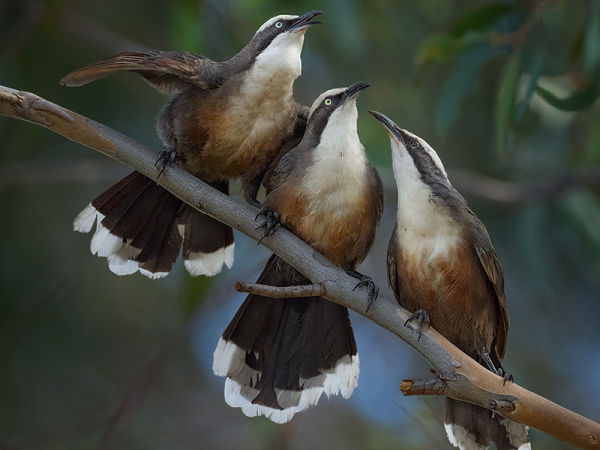Sustainability
- Home
- Locations
- What you can do
- LiFE Framework
- Sustainable Development Goals
- About us
- Grants
- Events
- Contact us
Now searching for:
The Grey-crowned Babbler Pomatostomus temporalis, is sometimes known as the ‘Yahoo-bird’.
 This strange name stems from one of the most common calls given by the species. The call is known as ‘antiphonal’, meaning that it is given by two birds almost in unison, with the ‘ya’ part given by the female, closely followed by the ‘hoo’ given by the male. It is so closely co-ordinated that it sounds as though it is being given by a single bird, and it may be repeated for up to 23 times. The call is regularly heard at the University at Wagga Wagga.
This strange name stems from one of the most common calls given by the species. The call is known as ‘antiphonal’, meaning that it is given by two birds almost in unison, with the ‘ya’ part given by the female, closely followed by the ‘hoo’ given by the male. It is so closely co-ordinated that it sounds as though it is being given by a single bird, and it may be repeated for up to 23 times. The call is regularly heard at the University at Wagga Wagga.
Grey-crowned Babblers occupy open woodlands dominated by mature eucalypts, with regenerating trees, tall shrubs, and an intact ground cover of grass and forbs. They build conspicuous dome-shaped nests and breed co-operatively in sedentary family groups of two to 15 birds. Thier conservation status is listed as vulnerable under the TSC Act.
Grey-crowned Babblers feed on insects and sometimes eat seeds. They forage in groups of two to fifteen birds on the ground among leaf litter, around fallen trees and from the bark of shrubs and trees.
The scattered remnant Yellow Box (Eucalyptus melliodora) and White Box (Eucalyptus albens) are found throughout the campus areas and within cropped paddock areas. To the west of the campus there is a large remnant patch of Callitris woodland that integrates into Inland Greybox Woodland on the slopes, and Box-Cypress-pine and open Box Woodlands on alluvial plains. This provides ideal habitat Grey Crowned Babblers as well as Speckled Warblers (also threatened).
Flight is laborious, so birds prefer to hop to the top of a tree and glide down to the next one. Birds are generally unable to cross large open areas. They live in family groups that consist of a breeding pair and young from previous breeding seasons. Usually two to three eggs are laid and incubated by females.
Most members of the group help to build nests, with the primary female contributing the most effort. Two types of nest are built: roost-nests (usually larger and used by the whole group) and brood-nests (for the breeding females), and often old nest sites are renovated and re-used from year to year. The large domed nests are placed in a tree fork 4 m - 7 m high and are made of thick sticks with projections that make a hood and landing platform for the entrance tunnel. The nest chamber is lined with soft grass, bark, wool and feathers. The brooding female (sometimes more than one) is fed by the other group members and all help to feed the nestlings. Larger groups tend to raise more young, and two broods are usually raised per season.